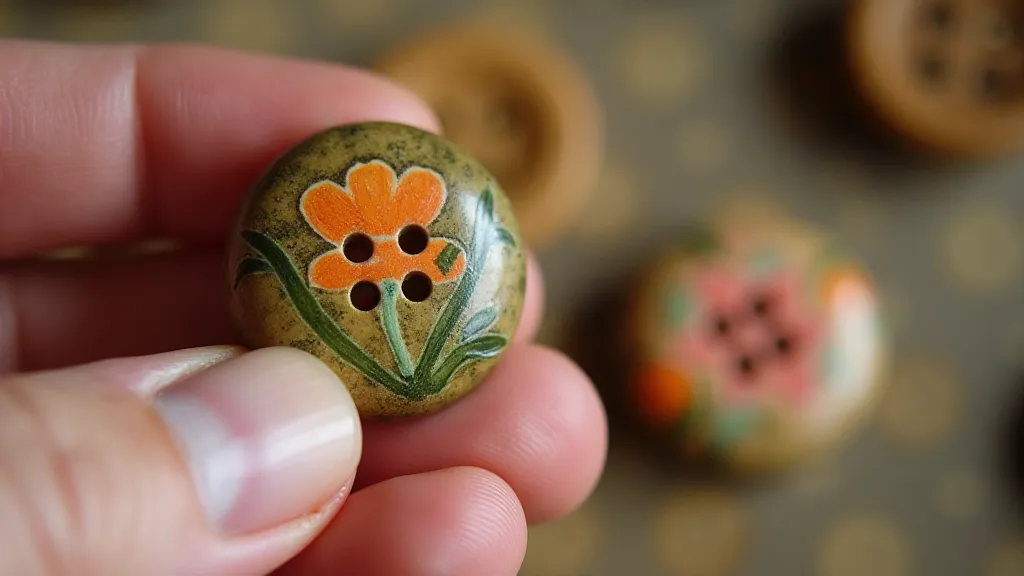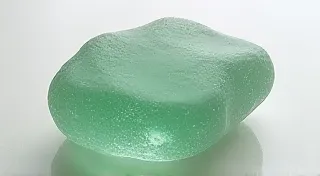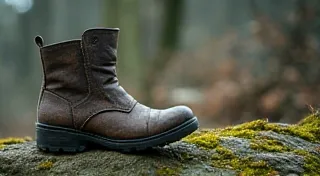Chromatic Ghosts: The Fading Palette of Bakelite Buttons
There’s a peculiar magic held within a box of vintage buttons. It’s not just the glint of glass or the sheen of metal; it's the echo of lives lived, garments worn, and histories quietly stitched into the fabric of time. As a collector of vintage buttons, I’ve often found myself lost in this quiet world, captivated by the stories these small objects hold. But none have intrigued me more than those crafted from Bakelite – a fascinating, flawed, and ultimately fleeting material. These are the buttons I call "chromatic ghosts," their vibrant hues softened, muted, or sometimes completely transformed by the inexorable march of time.
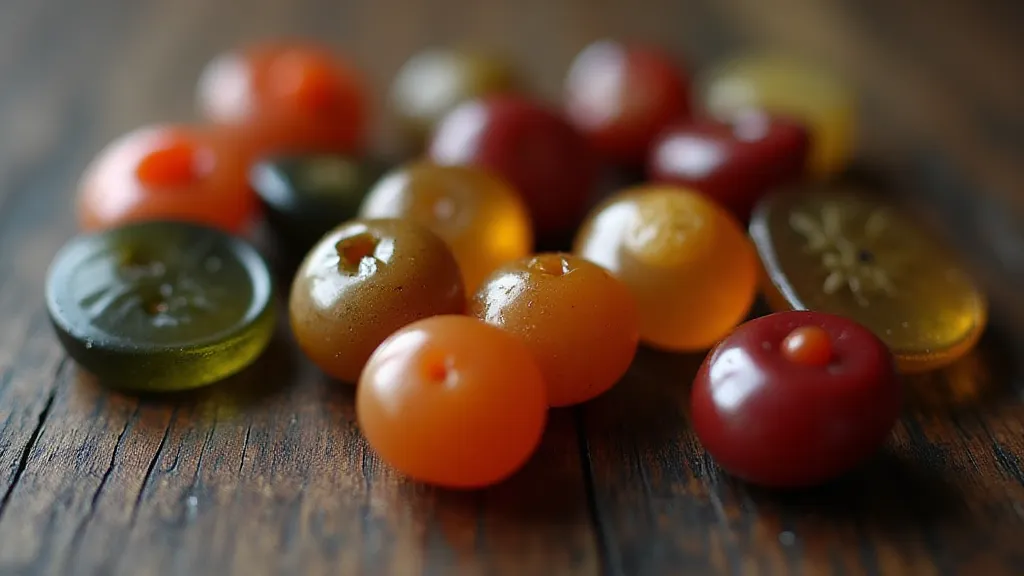
The Rise of Bakelite and a Revolution in Fashion
Before Bakelite, buttons were largely made from materials like bone, shell, horn, or precious metals. These were often labor-intensive to produce and therefore expensive, limiting button embellishments to the wealthy. Then, in the early 1900s, Leo Baekeland – a Belgian-American chemist – synthesized phenol formaldehyde, creating the first fully synthetic plastic: Bakelite. Suddenly, buttons became more accessible, allowing designers to experiment with new shapes, colors, and ornamentation. The 1920s and 1930s saw a blossoming of button fashion, with Bakelite buttons appearing on everything from flapper dresses to men's suits.
I remember my grandmother, a woman who truly appreciated the artistry of everyday objects, showing me a box of her old clothes. Amongst them, nestled in layers of tissue paper, were dozens of Bakelite buttons – a deep cherry red, a rich chocolate brown, a striking turquoise. She’s gone now, but those buttons remain, tangible links to a bygone era, reminders of her meticulous care for even the smallest details.
The Chemistry of Color – and Its Demise
Bakelite’s appeal wasn’t solely about affordability; it was also about its remarkable versatility. The material could be pigmented to create a dazzling array of colors, a far cry from the limited palette of natural materials. However, that very chemistry is also responsible for their eventual degradation. Bakelite's color wasn’s stable like pigments used in ceramic or metal buttons. The pigments, phenolic compounds themselves, would react with exposure to light, heat, and oxygen. A vibrant red button, for example, might slowly oxidize, shifting towards a duller orange, then a brownish-yellow. Greens and blues are particularly susceptible to fading, often developing a “bronzing” effect as the pigments break down.
The presence of trace impurities in the Bakelite mixture also contributed to the color shifts. Variations in manufacturing processes meant that no two batches of Bakelite were exactly alike, leading to subtle differences in color and stability. Even within a single button, color variation can be seen – a darker shade on one side compared to another, a mottled appearance suggesting uneven pigment distribution. These inconsistencies, while often perceived as flaws, are often what make vintage Bakelite buttons so unique and desirable to collectors.
The Olive Hue and the Amber Glow: Common Transformations
One of the most common transformations observed in Bakelite buttons is the shift from a bright green to a muted olive hue. This "olive effect," as it's sometimes called, is a hallmark of age and exposure. Similarly, reds tend to mellow into amber tones. Blues, unfortunately, often suffer the most dramatic changes, frequently fading to a ghostly grey or developing a bronze-like patina. Even seemingly insignificant environmental factors – the proximity to a sunny window, the humidity of a storage space – can influence the rate of degradation.
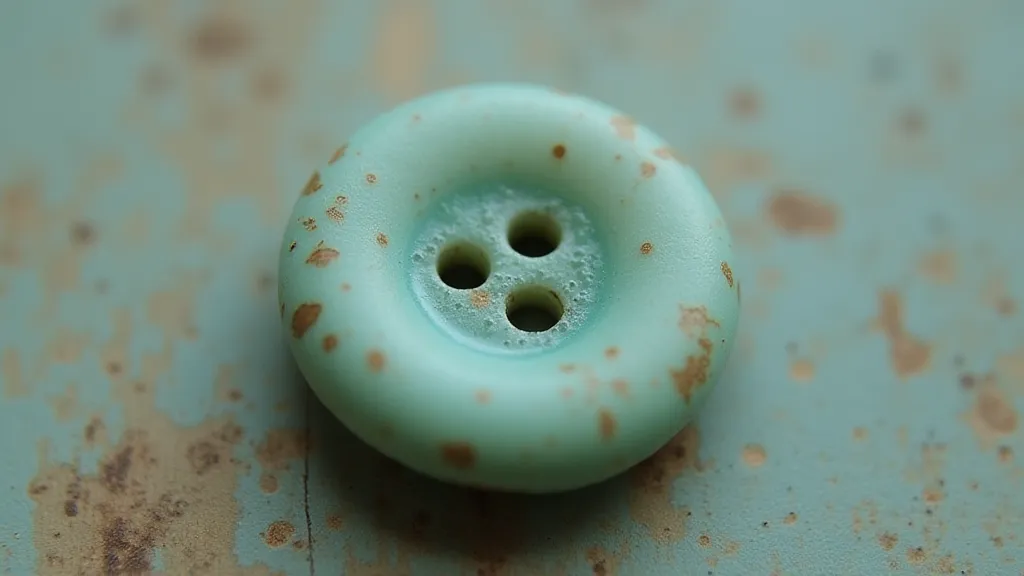
Preserving the Ghosts: Care and Conservation
While completely stopping the fading process is impossible, there are steps we can take to slow it down and preserve these fragile treasures. Direct sunlight is the enemy, so storing buttons in a dark, cool environment is paramount. Avoid extreme temperatures and humidity fluctuations. Gentle cleaning with a soft cloth is preferable to harsh chemicals. Many collectors now store their Bakelite buttons in acid-free tissue paper within archival-quality boxes.
The challenge isn’t just about preserving the physical object; it's about safeguarding a connection to the past. These buttons aren't merely decorative items; they’re fragments of stories, testaments to a specific moment in history. My own collection is a carefully curated record of an era – a visual chronicle of fashion, craftsmanship, and the enduring beauty of simple, everyday objects.
Beyond the Color: The Art of Craftsmanship
Beyond the captivating color variations, a closer look at vintage Bakelite buttons reveals the artistry of their creation. Many were hand-painted with intricate designs, ranging from delicate floral patterns to geometric motifs. Some feature elaborate molded details, demonstrating the skill of the button makers. These details are often overlooked, but they add another layer of appreciation for these small wonders. The presence of faint tool marks, subtle imperfections in the molding, and variations in the hand-painted designs are all testament to the human touch involved in their creation.
A Collector's Perspective
Collecting vintage buttons is more than just acquiring objects; it's about connecting with history, appreciating craftsmanship, and safeguarding a piece of the past. The "chromatic ghosts" of Bakelite buttons serve as a poignant reminder of the fleeting nature of beauty and the importance of preservation. Each faded hue, each mottled surface, tells a story – a story of time, of change, and of the enduring allure of the past. And as a collector, I feel privileged to be a custodian of these delicate treasures, ensuring that their stories continue to be told.
